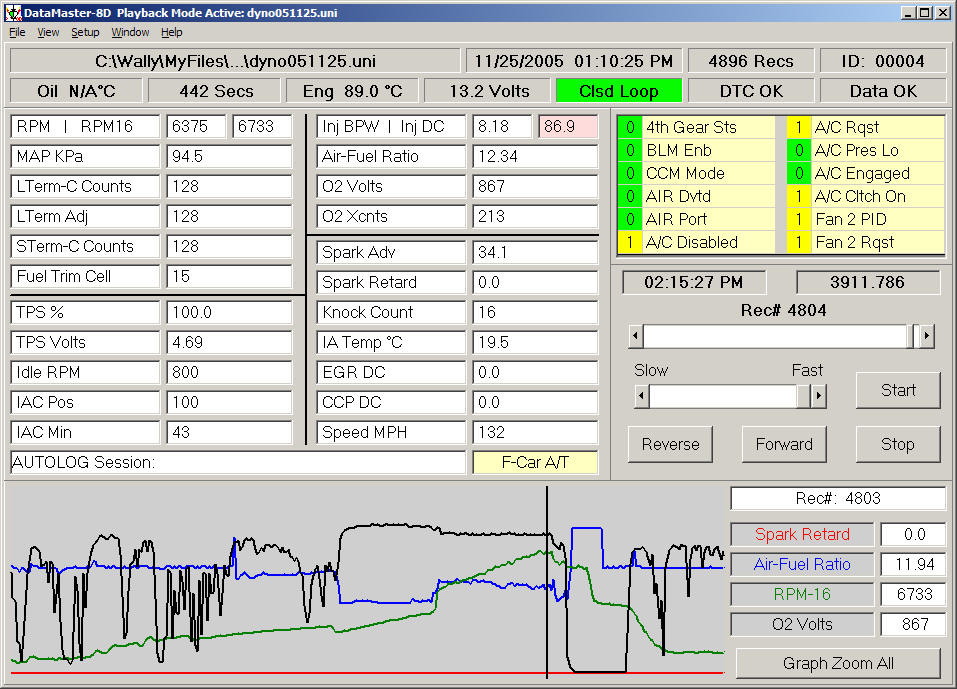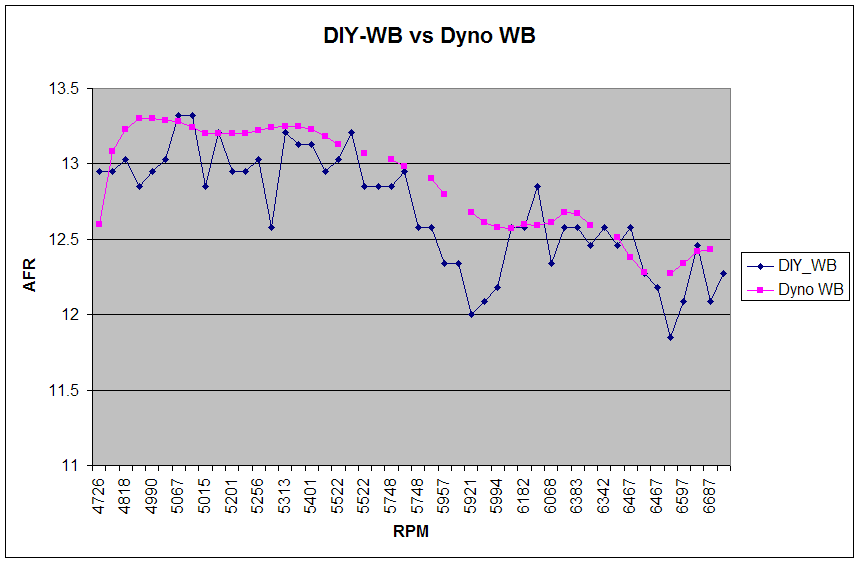
This test examines my 427cid motor with a TPIS
MiniRam intake
The current engine is a 4.125 bore x 4.000 stroke short block, with the
buildup described here.
Still using my 1.75" SLP shorty headers and 3" cat-back exhaust. The 700r4 has a DelTrans buildup. The Vigilante
torque-converter has been flashing to a 4000+ stall at the track, and about 4700rpm at the dyno, with this new motor.
|
||||||||||||||||||||||||||||||||||||||||||||||||||||||||||||||||||||||||||||||||||||||||||||||||||||||||
Engine Scan data from Last Dyno Run (010) with 34deg WOT spark advance

| MiniRam | |
| Temp |
~50
|
| Humidity | |
| Baro | |
| R/T | 0.106 |
| 60' | 1.607 |
| 330' | 4.663 |
| 1/8 | 7.230 |
| Mph | 95.23 |
| 1000' | 9.461 |
| 1/4 | 11.351 |
| Mph | 119.53 |
Torque-Converter Efficiency
These 2 runs compare The converter efficiency, with and without the TCC
locked. Almost 50hp and 50lb-ft of TQ appear to be lost in converter
efficiency, although according to this document from Precision Industries,
a high-stall converter doesn't give realistic power numbers. The converter was
flash-stalling almost 700rpm higher at the dyno than at the track, so there may be some merit in that statement.
Plotting a Dyno run from each gear, versus speed (MPH) will result in a
crossover point where the car makes more power in the next gear. Relating
that MPH/Power back to engine RPM will give the optimal shift point. In
most Automatic cars, because of the wider ratio spacing, the optimal point is at
or near redline. In the graph above you can see the 1-2 curves never even
get close, and the 2-3 shift is near redline in 2nd gear. Narrow spaced
ratio transmissions (5 and 6 speed manuals) may have lower optimal
shiftpoints. For my motor, the 1st gear peak hp is @ 35mph/6000rpm, so shifting around that point will get it into 2nd quickly. The 2-3 intersection is @ 77mph/6800rpm, so shifting around that point will begin to make more HP in 3rd gear.
DIY-WB calibration:

The Dyno WB was sampled from the tailpipe, while the DIY-WB was in the y-pipe, right before where the Cat. would be in the stock exhaust system. The tailpipe should be slightly leaner than the y-pipe area because the Cat. is hollowed out in my system. A car with a Cat. would be more pronounced. I believe the DIY-WB hack tracks the Dyno WB very close and is reasonable within the descrete limitations of the DIY lookup table.